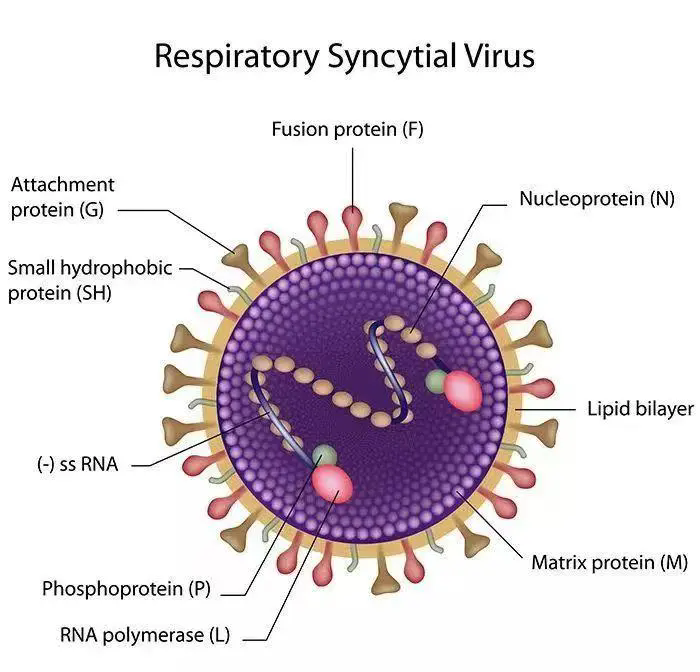"Guards" at the Nation's Gate | "Join" Forces to Combat "RSV"- A Comprehensive Strategy Against Respiratory Syncytial Virus
Issue Date:2025-03-25 Source:Alayongguan
What is the Respiratory Syncytial Virus? Will it impact my "purse"?
Winter and spring are peak seasons for respiratory diseases. Among these, the respiratory syncytial virus (RSV) plays a significant role in causing colds and lower respiratory tract infections in infants and young children. Many people are concerned and puzzled by it, wondering what sort of "monster" this syncytial virus is. Will it make my money less?
Part 1 What is the syncytial virus?

The syncytial virus, also known as the respiratory syncytial virus (RSV), is a type of RNA virus. When many people first hear this term, they might mistakenly believe it refers to a new respiratory disease. In reality, it was isolated from the respiratory tract of chimpanzees in 1956. It got its name because it causes adjacent cells to fuse during cell culture, forming structures similar to a syncytium due to cytopathic changes.
The Official Website Monitoring Report for Week 9 of 2025 of Chinese Center for Disease Control and Prevention indicates that, although there has been a recent decline in the epidemic of respiratory infectious diseases in China, it is still peak season. Continuous attention is needed for infectious diseases caused by pathogens such as the influenza virus, human metapneumovirus, adenovirus, respiratory syncytial virus, and Mycoplasma pneumoniae.
Part 2 Who are the susceptible populations?
The entire population is generally susceptible, particularly infants, the elderly, and individuals with compromised immune systems.
After a syncytial virus infection, the incubation period is typically 2-8 days. Early symptoms primarily include upper respiratory symptoms like nasal congestion, runny nose, cough, and hoarseness.
Part 3 Transmission routes of syncytial virus

Droplet transmission: This is the primary route of transmission. When a patient coughs or sneezes, they release droplets containing the virus, which can be inhaled by those nearby, leading to infection.
Contact transmission: The virus can survive on the surfaces of objects like cups, elevator buttons, toys, and door handles for nearly 7 hours. If you touch your mouth or nose after handling contaminated objects, the virus might exploit the opportunity to initiate an infection.
Part 4 How to prevent respiratory syncytial virus infection

Respiratory Syncytial Virus (RSV) can repeatedly infect individuals and is also prone to cluster transmission. In the absence of vaccines and effective medications, prevention should focus on strengthening personal protective measures:
1. Limit outdoor activities and avoid crowded places;
2. Wear masks correctly when going out;
3. Practice good hand hygiene in all locations; wash hands frequently, and avoid touching your eyes, mouth, and nose after contacting public surfaces.
4. Ensure proper protective measures are taken during hospital visits to prevent cross-infection within the facility.
Customs Tips
Before going abroad, research the disease situation in the destination country, particularly those illnesses that may pose health risks.
While abroad, especially in areas where diseases are prevalent, maintain good personal hygiene habits, wear masks when going out, and avoid densely populated places. Simultaneously, it is essential to maintain a healthy schedule, exercise regularly, and strengthen your immune system.
Upon entry into the country, if you exhibit any symptoms, it is important to promptly inform customs, cooperate with epidemiological investigations, sampling, and testing, and seek medical attention promptly.
Disclaimer:The above content is translated from Chinese version of Alayongguan. The Alayongguan version shall prevail.